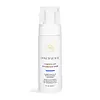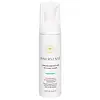What's inside
What's inside
 Key Ingredients
Key Ingredients

No key ingredients
 Benefits
Benefits

 Concerns
Concerns

 Ingredients Side-by-side
Ingredients Side-by-side

Water
Skin ConditioningPullulan
Galactoarabinan
Aloe Barbadensis Leaf Juice
Skin ConditioningGlycerin
HumectantCaprylyl/Capryl Glucoside
CleansingGluconolactone
Skin ConditioningSodium Benzoate
MaskingCalcium Gluconate
HumectantHydrolyzed Rice Protein
Skin ConditioningDecyl Glucoside
CleansingLauryl Glucoside
CleansingSorbitol
HumectantPotassium Sorbate
PreservativeCananga Odorata Flower Oil
MaskingLavandula Angustifolia Oil
MaskingCitrus Aurantium Dulcis Peel Oil
MaskingSalvia Sclarea Oil
MaskingVanillin
MaskingPogostemon Cablin Leaf Oil
MaskingGlycine Soja Oil
EmollientHydroxypropyltrimonium Honey
Sorbic Acid
PreservativeCitric Acid
BufferingDiheptyl Succinate
EmollientCapryloyl Glycerin/Sebacic Acid Copolymer
Skin ConditioningVaccinium Macrocarpon Seed Oil
Skin ConditioningVitis Vinifera Seed Oil
EmollientCucurbita Pepo Seed Oil
EmollientMacadamia Ternifolia Seed Oil
EmollientMacelignan
AntimicrobialTocopherol
AntioxidantLinalool
PerfumingLimonene
PerfumingWater, Pullulan, Galactoarabinan, Aloe Barbadensis Leaf Juice, Glycerin, Caprylyl/Capryl Glucoside, Gluconolactone, Sodium Benzoate, Calcium Gluconate, Hydrolyzed Rice Protein, Decyl Glucoside, Lauryl Glucoside, Sorbitol, Potassium Sorbate, Cananga Odorata Flower Oil, Lavandula Angustifolia Oil, Citrus Aurantium Dulcis Peel Oil, Salvia Sclarea Oil, Vanillin, Pogostemon Cablin Leaf Oil, Glycine Soja Oil, Hydroxypropyltrimonium Honey, Sorbic Acid, Citric Acid, Diheptyl Succinate, Capryloyl Glycerin/Sebacic Acid Copolymer, Vaccinium Macrocarpon Seed Oil, Vitis Vinifera Seed Oil, Cucurbita Pepo Seed Oil, Macadamia Ternifolia Seed Oil, Macelignan, Tocopherol, Linalool, Limonene
Water
Skin ConditioningSucrose
HumectantPullulan
Aloe Barbadensis Leaf Juice
Skin ConditioningGlycerin
HumectantCaprylyl/Capryl Glucoside
CleansingGalactoarabinan
Pyrus Malus Fruit Extract
Skin ConditioningPotassium Sorbate
PreservativeSodium Levulinate
Skin ConditioningCitric Acid
BufferingLavandula Angustifolia Oil
MaskingAmaranthus Caudatus Seed Extract
Skin ConditioningSodium Gluconate
Skin ConditioningPhospholipids
Skin ConditioningLinum Usitatissimum Seed Oil
PerfumingGlycine Soja Oil
EmollientSodium Benzoate
MaskingCaryocar Brasiliense Fruit Oil
Skin ConditioningLinalool
PerfumingWater, Sucrose, Pullulan, Aloe Barbadensis Leaf Juice, Glycerin, Caprylyl/Capryl Glucoside, Galactoarabinan, Pyrus Malus Fruit Extract, Potassium Sorbate, Sodium Levulinate, Citric Acid, Lavandula Angustifolia Oil, Amaranthus Caudatus Seed Extract, Sodium Gluconate, Phospholipids, Linum Usitatissimum Seed Oil, Glycine Soja Oil, Sodium Benzoate, Caryocar Brasiliense Fruit Oil, Linalool
Alternatives
Ingredients Explained
These ingredients are found in both products.
Ingredients higher up in an ingredient list are typically present in a larger amount.
Aloe Barbadensis Leaf Juice comes from leaves of the aloe plant. Aloe Barbadensis Leaf Juice is best known for helping to soothe sunburns. It is also anti-inflammatory, moisturizing, antiseptic, and can help heal wounds.
Aloe is packed with good stuff including Vitamins A, C, and E. These vitamins are antioxidants, which help fight free-radicals and the damage they may cause. Free-radicals are molecules that may damage your skin cells, such as pollution.
Aloe Barbadensis Leaf Juice also contains sugars. These sugars come in the form of monosaccharides and polysaccharides, folic acid, and choline. These sugars are able to help bind moisture to skin.
It also contains minerals such as calcium, 12 anthraquinones, fatty acids, amino acids, and Vitamin B12.
Learn more about Aloe Barbadensis Leaf JuiceCaprylyl/Capryl Glucoside is an alkyl glucoside. This just means it is creating by reacting alcohol and sugar. It is a cleansing and foaming ingredient.
Caprylyl/Capryl Glucoside helps remove the dirt, oil, and other pollutants from your skin.
Citric Acid is an alpha hydroxy acid (AHA) naturally found in citrus fruits like oranges, lemons, and limes.
Like other AHAs, citric acid can exfoliate skin by breaking down the bonds that hold dead skin cells together. This helps reveal smoother and brighter skin underneath.
However, this exfoliating effect only happens at high concentrations (20%) which can be hard to find in cosmetic products.
Due to this, citric acid is usually included in small amounts as a pH adjuster. This helps keep products slightly more acidic and compatible with skin's natural pH.
In skincare formulas, citric acid can:
While it can provide some skin benefits, research shows lactic acid and glycolic acid are generally more effective and less irritating exfoliants.
Most citric acid used in skincare today is made by fermenting sugars (usually from molasses). This synthetic version is identical to the natural citrus form but easier to stabilize and use in formulations.
Read more about some other popular AHA's here:
Learn more about Citric AcidThis ingredient is also known as arabinogalactan. It is a polysaccharide extracted from North American larch trees. It is a film-forming agent that helps enhance skin hydration and improves the texture of products.
Once applied, galactoarabinan forms a lightweight and breathable film on the skin. This helps reduce transepidermal water loss (TEWL) without adding a greasy finish.
It is also used to boost the efficacy of exfoliating actives like AHAs by improving skin feel and reducing irritation potential.
Studies show this ingredient supports hydration through two actions:
1) Limiting water evaporation
2) Enhancing the spreadability of emulsion products to disperse humectants and emollients across the skin's surface
Additionally, galactoarabinan can improve makeup wear and reduce "tightness" after cleansing.
Learn more about GalactoarabinanGlycerin is already naturally found in your skin. It helps moisturize and protect your skin.
A study from 2016 found glycerin to be more effective as a humectant than AHAs and hyaluronic acid.
As a humectant, it helps the skin stay hydrated by pulling moisture to your skin. The low molecular weight of glycerin allows it to pull moisture into the deeper layers of your skin.
Hydrated skin improves your skin barrier; Your skin barrier helps protect against irritants and bacteria.
Glycerin has also been found to have antimicrobial and antiviral properties. Due to these properties, glycerin is often used in wound and burn treatments.
In cosmetics, glycerin is usually derived from plants such as soybean or palm. However, it can also be sourced from animals, such as tallow or animal fat.
This ingredient is organic, colorless, odorless, and non-toxic.
Glycerin is the name for this ingredient in American English. British English uses Glycerol/Glycerine.
Learn more about GlycerinGlycine Soja Oil comes from the soybean. Glycine Soja is native to eastern Asia.
Soybean oil is an emollient. It is rich in antioxidants and fatty acids including palmitic, stearic, oleic, and linoleic acids.
As an emollient, the fatty acids in soybean oil helps keep your skin soft and hydrated. It does so by creating a film on top that traps moisture in.
Soybean oil is also rich in vitamin E, a potent antioxidant. Vitamin E is also anti-inflammatory and provides a soothing effect.
Studies show soy may help fade hyperpigmentation from UVB. It does so by disrupting the melanin process from UVB induced skin inflammation.
This ingredient may not be malassezia folliculitis, or fungal-acne, safe.
Soybeans are rich in proteins and are part of the legume family. Foods made with soybeans include tofu, soymilk, edamame, miso, and soy sauce.
Learn more about Glycine Soja OilLavandula Angustifolia Oil is more commonly known as lavender essential oil. It is considered a fragrancing ingredient.
Lavender imparts a famous scent. While the smell is lovely, this ingredient and may sensitize skin in topical products. This is because about 85% of the oil is made up of linalool and linalyl acetate.
When exposed to air, these two compounds become strong allergens. This ingredient exhibits cytotoxicity at low concentrations; amounts of 0.25% have been shown to damage skin cells.
A study from Japan found this ingredient caused lavender sensitivity after widespread exposure.
Lavender essential oil has some antimicrobial, antibacterial, and anti-inflammatory properties. However, the cons of this ingredient may outweight the pros.
More research is needed to confirm lavender essential oil's effects when used in aromatherapy.
Lavandula Angustifolia is known as the English Lavender and famous for creating purple fields in Provence, France.
Learn more about Lavandula Angustifolia OilLinalool is a fragrance and helps add scent to products. It's derived from common plants such as cinnamon, mint, citrus, and lavender.
Like Limonene, this ingredient oxidizes when exposed to air. Oxidized linalool can cause allergies and skin sensitivity.
This ingredient has a scent that is floral, spicy tropical, and citrus-like.
Learn more about LinaloolPotassium Sorbate is a preservative used to prevent yeast and mold in products. It is commonly found in both cosmetic and food products.
This ingredient comes from potassium salt derived from sorbic acid. Sorbic acid is a natural antibiotic and effective against fungus.
Both potassium sorbate and sorbic acid can be found in baked goods, cheeses, dried meats, dried fruit, ice cream, pickles, wine, yogurt, and more.
You'll often find this ingredient used with other preservatives.
Learn more about Potassium SorbatePullulan is a low viscosity polysaccharide (a long chain carbohydrate) with binding and film forming properties when dissolved in water. It is used to create a "silicone-like" or silky feel in cosmetics without adding viscosity.
According to a manufacturer, this ingredient's ability to easily dissolves makes it a great carrier for active ingredients.
Due to it being edible and tasteless, you'll likely find this ingredient in breath freshener strips. This ingredient is produced from the starch of the fungus, Aureobasidium pullulans.
Pullulan is stable over a broad-range of pH.
Learn more about PullulanSodium Benzoate is a preservative. It's used in both cosmetic and food products to inhibit the growth of mold and bacteria. It is typically produced synthetically.
Both the US FDA and EU Health Committee have approved the use of sodium benzoate. In the US, levels of 0.1% (of the total product) are allowed.
Sodium benzoate works as a preservative by inhibiting the growth of bacteria inside of cells. It prevents the cell from fermenting a type of sugar using an enzyme called phosphofructokinase.
It is the salt of benzoic acid. Foods containing sodium benzoate include soda, salad dressings, condiments, fruit juices, wines, and snack foods.
Studies for using ascorbic acid and sodium benzoate in cosmetics are lacking, especially in skincare routines with multiple steps.
We always recommend speaking with a professional, such as a dermatologist, if you have any concerns.
Learn more about Sodium BenzoateWater. It's the most common cosmetic ingredient of all. You'll usually see it at the top of ingredient lists, meaning that it makes up the largest part of the product.
So why is it so popular? Water most often acts as a solvent - this means that it helps dissolve other ingredients into the formulation.
You'll also recognize water as that liquid we all need to stay alive. If you see this, drink a glass of water. Stay hydrated!
Learn more about Water